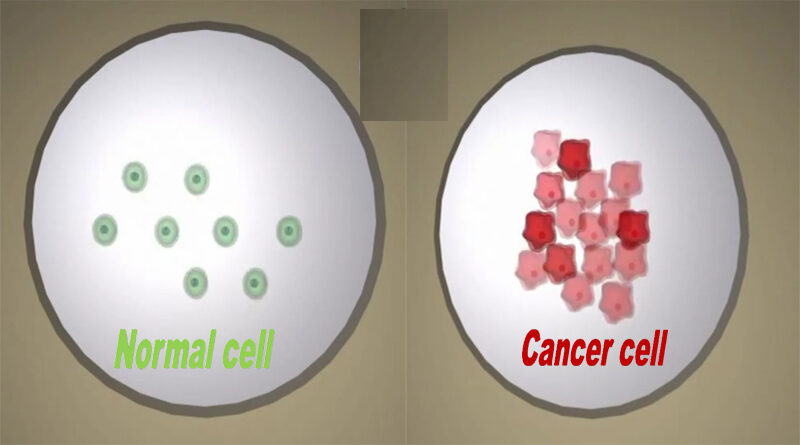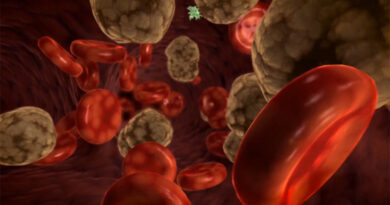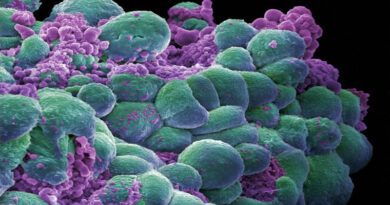Difference between normal cell and cancer cell
Last Update on September 14, 2022
| Difference between normal cell and cancer cell | 10 Key points of Cancer cells | Normal cell vs. cancer cell |
The average human body contains 37.2 trillion cells. To give you a better understanding of how many cells that is write the amount out in full as 37,200,000,000,000. In many dimensions, cancer cells are different from normal cells. The Difference between normal cell and cancer cell is:
- Develop without receiving commands to do so. Only when they get such signals do normal cells grow.
- In response to irreparable damage, “stick together” by maintaining selective adhesions that they gradually adjust to keep them in their intended location
- Go through programmed cell death (apoptosis) as part of normal development, to preserve tissue homeostasis, and to respond to unhealable damage.
- Control their growth using external signals, meaning they only develop and divide when required.
- Despite sharing the same genome, they can develop into specialized cells with distinct roles and so take on various physical traits.
- Cancer cells attack surrounding places before moving on to other body parts. Most normal cells do not travel across the body and quit growing when they come into contact with other cells.
- Disregard signals that would typically instruct cells to cease dividing or die (a process known as programmed cell death, or apoptosis).
- Infiltrate adjacent regions before moving on to other body parts. Most normal cells do not travel across the body and cease growing when they come into contact with other cells.
- Instructing blood arteries to expand toward malignancies, these blood veins transport waste from tumors and provide oxygen and nutrition to the tumors.
- Evade the immune system by hiding. Damaged or aberrant cells are typically eliminated by the immune system.
- Fool the immune system into sustaining and promoting the growth of cancer cells. As an illustration, certain cancer cells persuade immune cells to defend against the tumor rather than fight it.
- Acquire many chromosome alterations, including chromosome component duplications and deletions. Some cancer cells have accumulated several chromosome alterations, such as chromosome duplications and chromosome portion deletions. Some cancer cells contain twice as many chromosomes as healthy cells do.
- depend on different nutrients than healthy cells do. Additionally, as opposed to most normal cells, certain cancer cells use a distinct process to produce energy from nutrients. This promotes the rapid growth of cancer cells.
Complicated genetic mutations in one cell or group of cells result in a complex genetic disorder known as cancer. These modifications impair normal cell activity, notably impacting how cells divide and develop. Unlike healthy cells, cancer cells continue to grow and divide, and this uncontrolled cell growth leads to the development of a tumor.
More genetic alterations occur in cancer cells than in normal cells, however not all genetic changes result in cancer. Proto-oncogenes, tumor suppressor genes, and DNA repair genes are typically the three types of genes that are most frequently impacted by the genetic changes that cause cancer.
The aberrant actions that cancer cells frequently exhibit are essential to their survival. This fact has been used by researchers, who have created treatments that focus on the aberrant characteristics of cancer cells. For instance, certain cancer treatments stop blood vessels from directing their growth toward tumors, thereby depriving the tumor of the nutrients it requires.
1. Difference between normal cell and cancer cell:
| Basis: | Normal Cell Characters: | Cancer cell Characters: |
| Cell shape | Uniform | Irregular |
| Nucleus | Spheroid shape, single nucleus | Irregular shape, multi-nucleation common |
| Chromatin | Fine, evenly distributed | Coarse, aggregated |
| Nucleolus | Single, inconspicuous nucleolus | Multiple, enlarged nucleoli |
| Cytoplasm | Large cytoplasmic volume | Small cytoplasmic volume |
| Cells Growth | Controlled | Uncontrolled |
| Maturation | Mature into specialized cells | Remain immature and undifferentiated |
| Blood supply | Normal angiogenesis (occurs during development/ healing) | Tumor-induced angiogenesis |
| Location | Remain in their intended location | Can spread to different locations in the body (metastasis) |
2. 10 Key points of Cancer cells:
- Avoid Immune Destruction
- Enable replicative immortality
- Activate invasion & metastasis
- Induce Angiogenesis
- Resist cell death
- Deregulate cellular energetic
- Sustain proliferative signaling
- Evade growth suppressors
- Posses genome instability & mutation
- Mediate A tumor-associated inflammatory response
The specific traits that set cancer cells apart from healthy cells are known as “hallmarks of cancer.”
3. Normal cell vs. cancer cell:
Cell Shape: Normal human cells occur in a variety of sizes and shapes, and as the difference between a normal cell and cancer cells takes on specialized functions, their forms alter correspondingly. For example, a red blood cell and a nerve cell have significantly different shapes. While cells of the same cell type do not look alike, they will look very similar and keep a regular shape if you investigate cells of the same cell type.
For many years, scientists have squinted down microscopes, searching for differences between a normal cell and cancer cell characteristics that can help them distinguish between a cancer cell and a normal cell. The appearance of cancer cells is a disorganized mass of different-sized, misshaped cells. Researchers have been examining whether cancer cell shape can aid to identify various cancer kinds as well as the association between cancer cell shape and a patient’s future.
Nucleus: The nucleus of healthy cells appears smooth and has a constant, spheroid shape. The control of nuclear morphology involves a number of structural elements. The nuclear lamina is one of these structural elements. Nuclear membrane bulges known as “blebs” are frequently seen in cancer cell nuclei, which are typically malformed. According to research, this “blebbing” is brought on by an imbalance in the proteins that make up the nuclear lamina, which causes the lamina fibers to separate.
Chromatin: In contrast to the fine, uniform chromatin present in healthy cells, chromatin found in cancer cells is coarse, aggregating into uneven clumps that differ in size and shape.
Nucleolus: The morphology of a cancer cell’s nucleolus or nucleoli can be used to gauge the activity of the tumor as well as the treatment outcomes. Cancer cells have an abnormally expanded and disorganized nucleolus; some cancer cells have several nucleoli.
Blood Supply: Angiogenesis is the process through which new blood vessels develop from the vasculature that already exists. In healthy cells, angiogenesis is a crucial process that takes place during growth, development, and wound healing. It is also connected to the development of cancer, as a result of the tumor’s capacity to release chemical signals that promote angiogenesis.
How do cancer cells behave differently from normal cells in the body?
Researchers can take advantage of these distinctions when developing strategies to treat cancer since malignant cells show different characteristics from normal cells.



